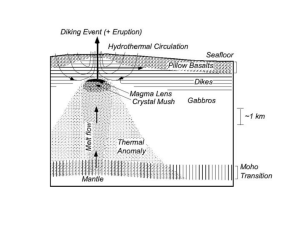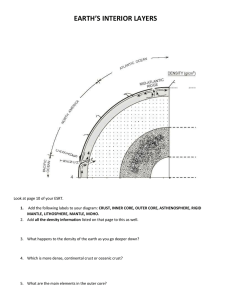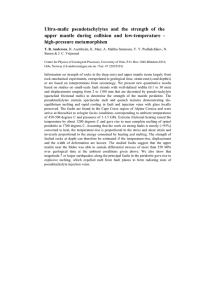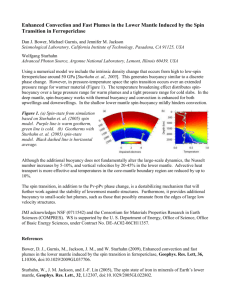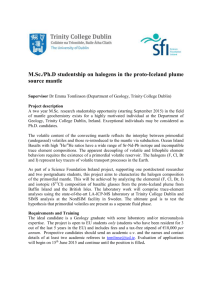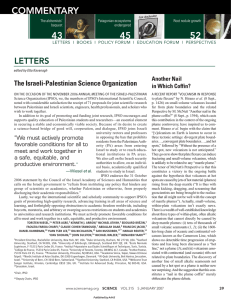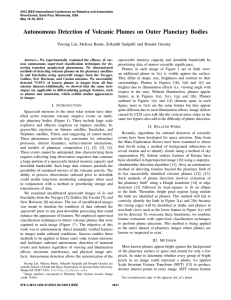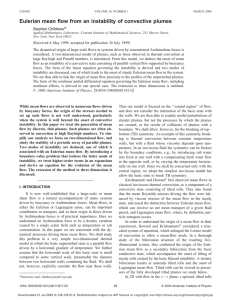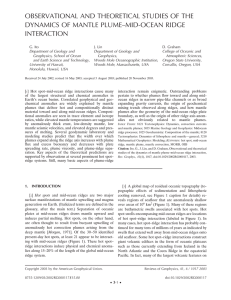The plume coffin? Don L. Anderson
advertisement
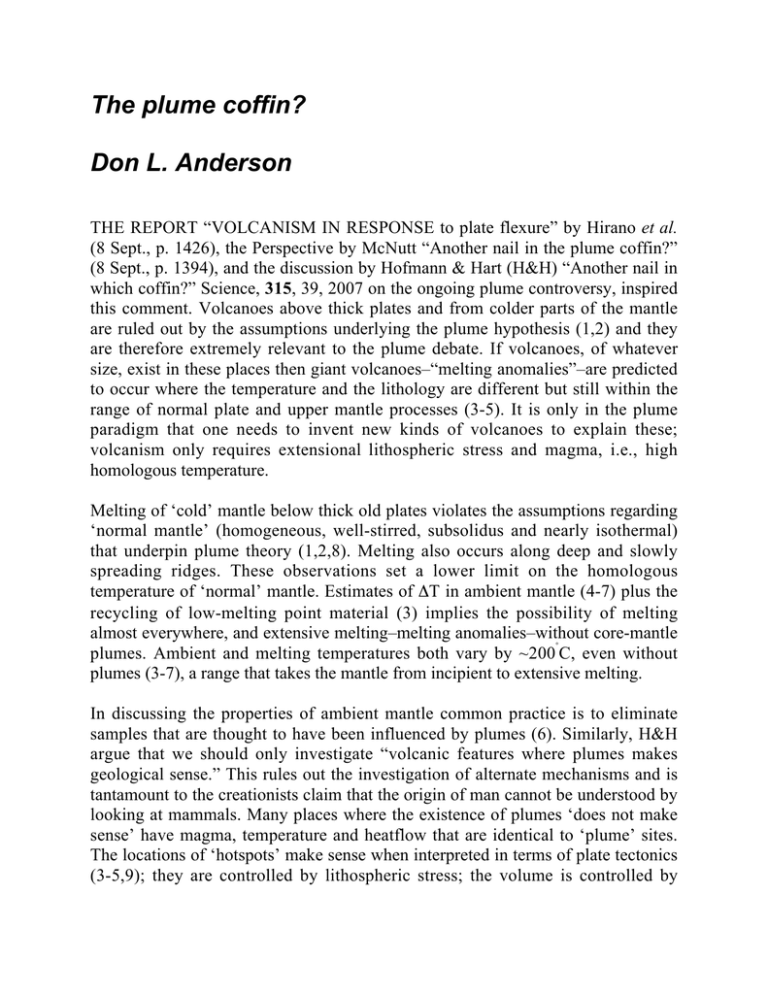
The plume coffin? Don L. Anderson THE REPORT “VOLCANISM IN RESPONSE to plate flexure” by Hirano et al. (8 Sept., p. 1426), the Perspective by McNutt “Another nail in the plume coffin?” (8 Sept., p. 1394), and the discussion by Hofmann & Hart (H&H) “Another nail in which coffin?” Science, 315, 39, 2007 on the ongoing plume controversy, inspired this comment. Volcanoes above thick plates and from colder parts of the mantle are ruled out by the assumptions underlying the plume hypothesis (1,2) and they are therefore extremely relevant to the plume debate. If volcanoes, of whatever size, exist in these places then giant volcanoes–“melting anomalies”–are predicted to occur where the temperature and the lithology are different but still within the range of normal plate and upper mantle processes (3-5). It is only in the plume paradigm that one needs to invent new kinds of volcanoes to explain these; volcanism only requires extensional lithospheric stress and magma, i.e., high homologous temperature. Melting of ‘cold’ mantle below thick old plates violates the assumptions regarding ‘normal mantle’ (homogeneous, well-stirred, subsolidus and nearly isothermal) that underpin plume theory (1,2,8). Melting also occurs along deep and slowly spreading ridges. These observations set a lower limit on the homologous temperature of ‘normal’ mantle. Estimates of ΔT in ambient mantle (4-7) plus the recycling of low-melting point material (3) implies the possibility of melting almost everywhere, and extensive melting–melting anomalies–without core-mantle plumes. Ambient and melting temperatures both vary by ~200˚C, even without plumes (3-7), a range that takes the mantle from incipient to extensive melting. In discussing the properties of ambient mantle common practice is to eliminate samples that are thought to have been influenced by plumes (6). Similarly, H&H argue that we should only investigate “volcanic features where plumes makes geological sense.” This rules out the investigation of alternate mechanisms and is tantamount to the creationists claim that the origin of man cannot be understood by looking at mammals. Many places where the existence of plumes ‘does not make sense’ have magma, temperature and heatflow that are identical to ‘plume’ sites. The locations of ‘hotspots’ make sense when interpreted in terms of plate tectonics (3-5,9); they are controlled by lithospheric stress; the volume is controlled by 2 mantle fertility and the sizes of fertile blobs (3,9). H&H suggest that investigating volcanoes that are anomalous in the context of plumes obfuscates the plume debate. This is exactly what you want to do to test a hypothesis and compare it against competing ideas. One can only define anomaly by studying non-anomalous areas. Hotspots are ‘melting anomalies’ and one must understand the context before one understands the anomaly. 1. D. McKenzie, M. Bickle, J. Petrol. 29, 625(1988). 2. R. White, J. Petrol. Special Lithosphere Issue, 1 (1988). 3. D. L. Anderson,Elements, 1, 271(2005). 4. D. L. Anderson, Geophys. Res. Lett., 27, 3623 (2000). 5. W. M. Kaula, J. Geophys. Res. 88, 10323–10332 (1983). 6. C. Herzberg et al., Geochem. Geophys. Geosys. (2007) 7. D. Green et al., Eur. J. Mineral. 13, 437(2001). 8. D. Presnall, G. Gudfinnsson, submitted, J. Petrol. (2006). 9. A. Hofmann, Nature, 385, 219 (1997).109. 10. A.D. Smith, in G.Foulger et al., eds., Plates, Plumes, and Paradigms, Geol. Soc. Am. Sp. Paper 388, 303 (2005).

